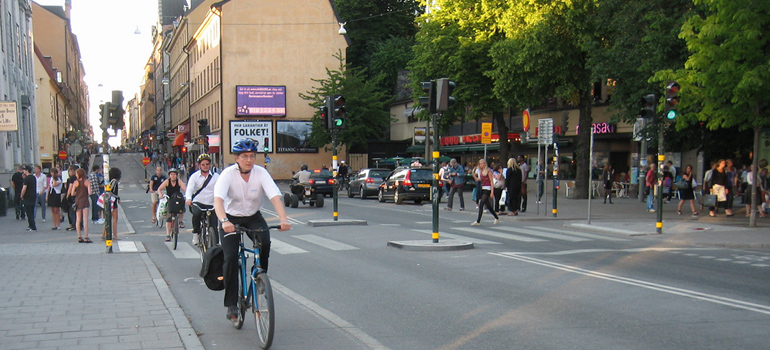by Dr. Kay Teschke
To many North Americans, World CarFree Day may sound strange; the idea of environmental idealists who have no sense of what real life is like. North Americans who have travelled to Europe, however, come back with pleasing memories of sidewalk cafés, small shops, people in the streets, and the relaxed atmosphere of traffic-free spaces.
The Danish architect and urban design guru, Jan Gehl, calls these “people places” and says transportation modes are vital to create the atmosphere. The best places invite people to walk, cycle and take public transit.
Around North America, there are many signs that these modes are important to us too. Many changes are in the news – young people who are driving less, real estate agents who are advertising WalkScores, new bike share systems that are wildly popular, and people who are clamouring for more rapid transit.
We are starting to see changes that make walking and biking easier. Safety is key: for example, concern about traffic safety is the biggest deterrent to bicycling and to parents letting their children walk to school. To overcome these fears (and slash injury rates), cities are adopting “Vision Zero” plans – making traffic injuries unacceptable.
What are some features of such a program?
- Lower urban speed limits (to 30 km/h), especially on residential streets, reduce injuries and injury severity. London, Paris and New York City have all recently lowered their speed limits, and initial reports indicate that travel times hardly budge but injuries plummet, and
- Protected bike lanes. The research we have undertaken here at UBC, as well as that of others, show that they reduce not only injuries to bicyclists, but also those to pedestrians and car passengers. They may even lower travel times.
Sweden was the pioneer of Vision Zero and it has the lowest traffic fatality rate in the world. If Canada achieved their rate, we would halve our traffic deaths – 1000 lives saved a year.
And if our cities became a little more car free and European on the way, wouldn’t that be wonderful?

